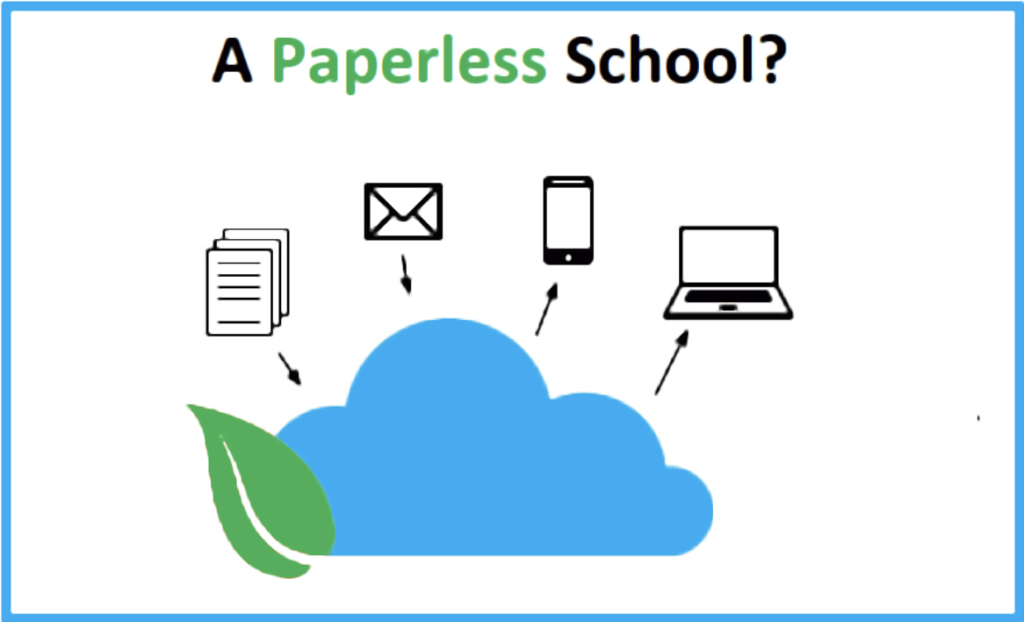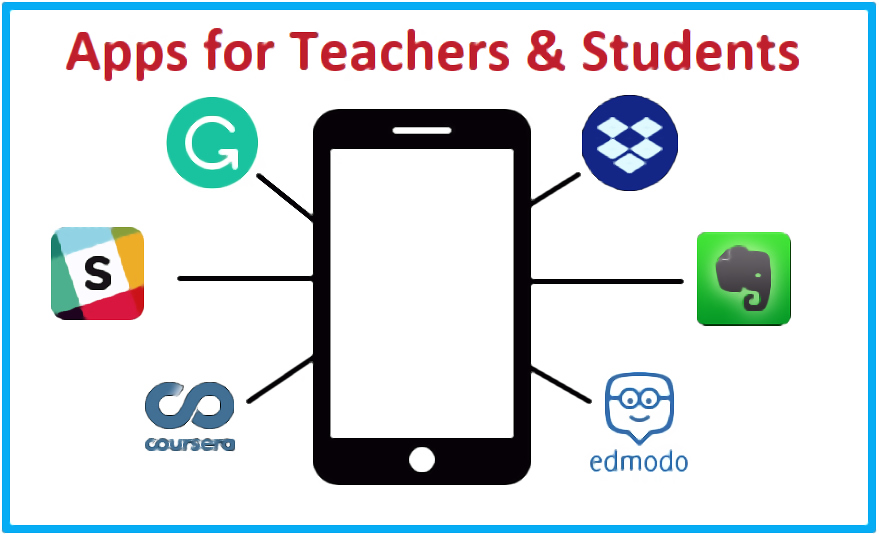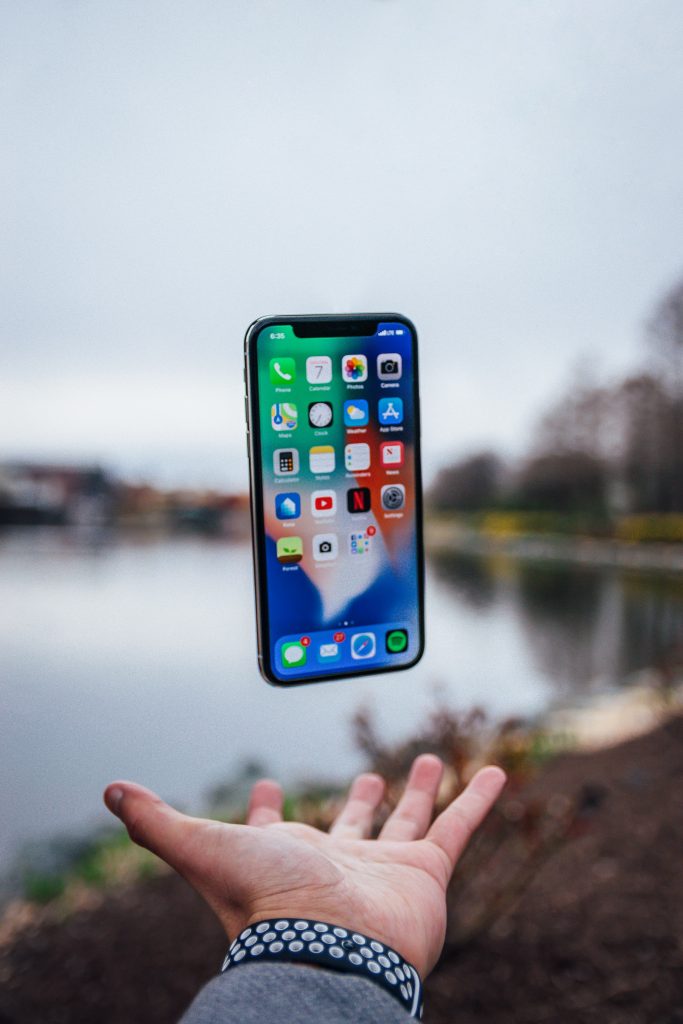There’s no denying that technology is changing the face of education. Personal digital devices like laptops and tablets have unavoidably found their way from student’s homes to their classroom. Using phones in school is also allowed on some campuses.
In fact, you can charge your phone, take pictures of homework assignments, or put on your headphones and listen to music… all during the middle of class!
Yet other, more old-fashioned schools remain adamant on their stance against allowing personal devices, like cellphones, in school.
Citing issues like inappropriate use, cheating, and general disruption, certain schools have maintained their policy on prohibiting using cellphones in the classroom; other schools have gone so far as to ban cellphones entirely!
While the problems with cellphones in school are valid, and clear consequences for misuse should be enforced, implementing a blanket policy forbidding the resource altogether would be severely counter-intuitive and unrealistic!
An attempt at a city-wide cell phone ban in New York City Schools caused so much outrage that several parents issued a lawsuit against the Department of Education, claiming that cell phones provide a vital channel for communication between parent and child, especially in case of emergency. Eventually, the ban was dropped.
While overseeing a student’s safety is important, parents and teachers alike both fail to notice the untapped educational possibilities of cellphones!
Table of Contents
11 Reasons Why Phones in School Should Be Allowed
1. Cellphones in school are inevitable.
The education system is a constantly evolving and dynamic landscape. Technology will always find its way into the classroom!
For example, think about how the role of calculators in the schools went from being dismissed as an unnecessary crutch, to becoming an efficient and essential tool in mathematics!
More recently, we’ve seen presentations evolve from using bulky, noisy overhead slide-projectors, to live video-projectors and fun interactive whiteboards!
The widespread adoption of technology is unavoidable, and traditional schools resistant to change can be detrimental…
“If we teach today as we taught yesterday, we rob our children of tomorrow.”
John Dewey
The quote above by the influential education reformer was aimed at the many antiquated 20th century schools, yet it remains highly relevant today.
Dewey understood that schools should be the first place in society to implement visionary new methodologies, take risks, and challenge well-established notions. He saw the introduction of new technology as an opportunity to enhance the learning experience!
With these radical new ideas, he reorganized the curricula of schools and adopted progressive instructional approaches, transforming American schools from a passive model to what we have today: a hands-on learning environment with an emphasis on the freedom and individuality of young people.
If John Dewey was alive today, I’m sure he would be an advocate for cellphones in school and their potential to customize individual students’ learning environments and make education viable, anytime and anywhere.
2. Phones in school are good for the environment!

An emerging technology known as cloud computing has prompted a new trend known as “going paperless.” Through the cloud, many businesses and individuals worldwide are transitioning from physical documents to electronic (with very little infrastructure or maintenance), and are accessing them from anywhere with their personal devices.
The paperless initiative has helped organizations save time, save money, and save the planet all at once. Considering the amount of paper waste generated by the typical classroom for handouts, worksheets, assignments, and exams, schools should follow suit.
Which is exactly what the Clarkstown Central School District (CCSD) in New York has done.
Since going paperless, eleven elementary schools, three middle schools, and two high schools in the district are saving millions of sheets of paper annually.
“During a recent four-month period, CCSD teachers uploaded 91,000 total documents to the file sharing system, saving an estimated five million sheets of paper. Nearly 102,000 unique CCSD student documents were also uploaded during that same time period.”
For the CCSD, converting class materials to digital formats and requiring students to access everything on their device has produced real, tangible results.
More importantly, the schools of the CCSD have taught their students an invaluable lesson: establishing sustainable habits and pursuing eco-friendly alternatives are worthwhile goals!
3. Phones in school teach digital literacy.
At this day in age, almost all children grow up surrounded by computers and mobile devices. In fact, most kids get their first smartphone when they are 10 years old.
Innovative schools should provide these “digital natives” the guidance to use technology responsibly at an early age, so they build computer skills that will allow them to succeed in current and future job markets.
For Carol Rainbow, a retired teacher, the decision to use cellphones at school for educational purposes is an obvious one:
“Many students already have their own trusted devices, which they are comfortable using, it makes sense to use them in education rather than a machine that belongs to school which they leave behind at the end of the day… [Their phones] are available 24/7 so always and anywhere, learning becomes viable.”
The Guardian
Rainbow understands that smartphones are so much more than just phones; they are powerful handheld computers with cameras, speakers, access to the internet, educational apps, and worldwide communication.
Teaching children to use these tools productively enables a world of creativity from pieces of art, videos, presentations, audio recordings, research on any topic, and so much more!
Furthermore, utilizing the full extent of mobile devices helps prevent the rising trend of computer addiction and dependence by “turning toys into tools.”
4. Phones in school improve communication.

The role of the 21st century teacher has expanded to also include encourage adviser and coach. Unfortunately, as class sizes grow, teachers have less time and attention to dedicate to each student. As a result, class participation and student engagement has diminished.
The answer?
You guessed it… Cellphones in school!
Through student response systems, such as discussion forums and crowd-sourcing polls, teachers can gather student feedback via smartphone apps and gain insight on each student’s understanding of a topic… in real-time. Teachers can also take attendance and assign grades for tests and homework in a FRACTION of the time… freeing them up for more personal instruction for each student.
Ken Halla, a ninth-grade World History and AP Government teacher for over 22 years recommends using PollEverywhere to gauge student comprehension of subject material before a test.
Using this tool, teachers can create questions and send them to each student—usually in multiple-choice format. Students text in their answers, then they’re compiled by the website. If many students answer the same question incorrectly, the teacher can immediately prepare to review those topics.
By encouraging a mobile device-friendly environment, schools can overcome some of the challenges of large classroom sizes and significantly increase productivity, as students will always have a direct platform to communicate with their teachers and they are taught time management techniques.
5. Cellphones in school increase flexibility, convenience, and organization.
Smartphones make carrying around heavy textbooks, assignments, notes, and everything else in a backpack obsolete!
All these things can now be accessed anytime and anywhere from a portable, lightweight device. In addition, calendar and planner apps provide an opportunity for students to learn time management skills and keep their studies organized.
For example, a useful app called Remind helps students organize their assignments and sends them a text message when there’s an upcoming due date.
After incorporating the app into the classroom, Ken Halla was “stunned by how many more kids started doing the homework.” Originally, Halla just assumed that “they didn’t want to do the work, but it was more that they were unorganized and had forgotten to do it.”
José Picardo, a foreign language teacher at Nottingham High School, uses smartphones to help students stay organized and assess their learning.
In his class, students use their smartphones regularly to bring up current foreign language news during group discussions, access online dictionaries and download foreign language podcasts.
6. Phones in school increase a sense of safety.
Bringing cellphones in school increases the sense of safety of both students and parents. This is because there are some instances where they need to contact each other due to emergencies.
Contacting parents mediated by school sometimes takes time so one of the best options is if the student can contact them directly. This is especially useful during medical emergencies. There are also times where the parents need to get ahold of their child for some important reason or just to check up on them on why they are running late.
7. Phones in school saves up money.
How do using cellphones save up money? Well, let’s just say that if a child has a phone with her, she can easily download learning materials without spending a lot of money. Unlike buying books or printing modules, accessing these materials is instant and not heavy on the pocket which is helpful for those students who are working in high school.
Smartphones can replace notebooks and pens. Students can even use this to take notes so it is very handy and functional.
8. Phones in school provide easy access to information.
Surely, during recitations, some students find it hard to keep up with their top classmates because they lack knowledge of their subject matter. If smartphones are allowed in school, students will have easy access to more information and therefore will be more participative during class discussion.
Being able to search up facts in just a few clicks is one of the biggest advantages of using technology. There will be more interesting debates and exchange of opinions inside the class since everyone has something to say.
9. Cellphones in school provide supplementary learning materials.
Another reason why cell phones should be allowed in school is that there are useful supplementary learning materials that can be found on the internet. A good example of this is Youtube.
Tons of videos are uploaded on Youtube every year and a good number of this can be used as a springboard in teaching several topics at school. For instance, if the teacher is discussing WWII, aside from the usual board talk, she can also make her students watch videos related to it. This way, the students will be more engaged most especially those who are visual and auditory learners.
There are also websites that offer a lot of useful content. For instance, Math websites and Science websites. Students will only go to their webpage and they will be presented with additional information on your previous or current lesson.
10. Cellphones in school serves as a memory aid.
There are so many quizzes and tests that students have to review for in school so it is beneficial for them to use their phones in reviewing. If they are allowed to use their smartphones to take notes or even take pictures of lessons that are too complicated to copy by hand, they can just boot their phones up and they can review anywhere.
This is also especially handy during science class. If they did some laboratory work or encountered certain creatures, plants, chemical reactions that they may not ever encounter again, they can document it using their phone.
11. Phones in school promote independence.
This will be possible if teachers will create lesson plans that would integrate the use of cellphone in every lesson. The teacher will only serve as a facilitator and the students will access every learning material on their phones. This will help students to be more independent because they will be in charge of their own learning.
Conclusion
Listed above are just some of the few reasons why innovative schools across the country are integrating smartphones into the classroom. The “Bring Your Own Device” (BYOD) movement, which began in the business world as an approach to increase employee morale and productivity, is now being adopted by more and more schools.
This relatively new idea still has many unexplored opportunities, as well as unknown challenges. While these challenges may be difficult to confront, all organizations must be open to change and trying new methods, none more so than our schools.
To learn more about how to prepare students for technology in the classroom, click here.
To read about how to help high schoolers deal with stress, click here.
To find out about smartphone apps that can simplify your life, click here.
Todd VanDuzer
Latest posts by Todd VanDuzer (see all)
- Why Finding the Right Thing to Study Matters: Setting the Foundation for Success - July 26, 2023
- How USA Staff Onboarding Benefits From Innovative Software - July 26, 2023
- Top 7 Best Reasons to Get an MBA - June 7, 2023
- How to Support Your Child When They Go to College - April 29, 2023
- How to Maximize Your Job Search with Expert Resume Writers Experienced in Your Field - April 20, 2023


Nice and interesting post, Jason! The points mentioned gives a good and interesting insight. Mobile devices have become inevitable and indispensable and educational sector is increasingly moving towards adopting mobile technologies for imparting education. Cell phones in schools were not allowed some time back but given its significant benefits and importance educational sector is ready to embrace mobility for education. However, the deployed fleets of student devices are required to be powerfully managed and secured through a scalable Mobile Device Management Solution which helps to manage, control and secure devices through a centralized cloud-based web console.